Summary
-
General knowledge and skills for crew responsible for operating and monitoring a satellite terminal at sea.
Description
Covers satellite communications basics, antennas, interconnections to ship's navigation systems, problem solving, safety, regulatory and licensing questions, and comparing VSAT with other broadband marine services.
Why should VSAT operators be trained?
Marine satcom terminals offer global broadband coverage to ships at sea. But for maximum up-time, crew members must be able to perform critical ongoing operational tasks after the installation technician has departed.
What will you learn in the course?
In this course, you will learn fundamental aspects of how to monitor, operate, and perform at-sea maintenance of marine satcom and VSAT systems. Topics covered include concepts of VSAT communications, microwave signal characteristics, satellite coverage zones and pointing angles, beam switching, stabilized antennas, blockage, interconnections to ship’s navigation systems, safety issues, critical licensing questions, preventing interference, and comparing VSAT with other marine communications services.
Audience:
This course is ideal for all radio operators, IT technicians, or other crew members who are responsible for a VSAT system while underway. The course also serrves as the first step towards specialist operator certifications, and is ideal for those who simply need a solid introduction to broadband maritime satellite communications.
Certification:
Completion of GVF561 serves as the first step towards specialist operator certifications.
Prerequisites:
General familiarity with computer and voice communications.
Delivery:
Animated & interactive HTML5, self-paced, on-line format. Requirements: internet access while studying the course material (high speed preferred ); current browser with JavaScript enabled; permission to access SatProf server and learning system websites; mouse.Lessons
8 lessons
- Maritime communications
- Satellite basics
- Stabilized antennas
- VSAT basics
- Connecting to other ship equipment
- Bands and beams
- Blockage and safety
- Interference
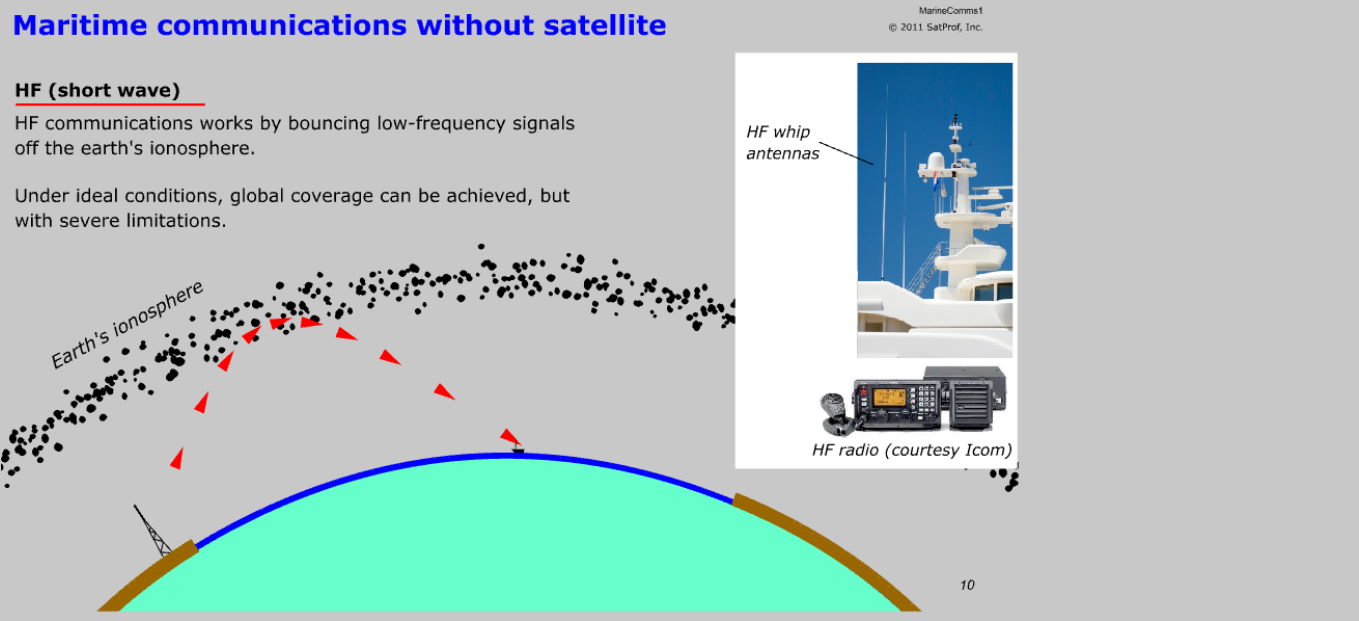
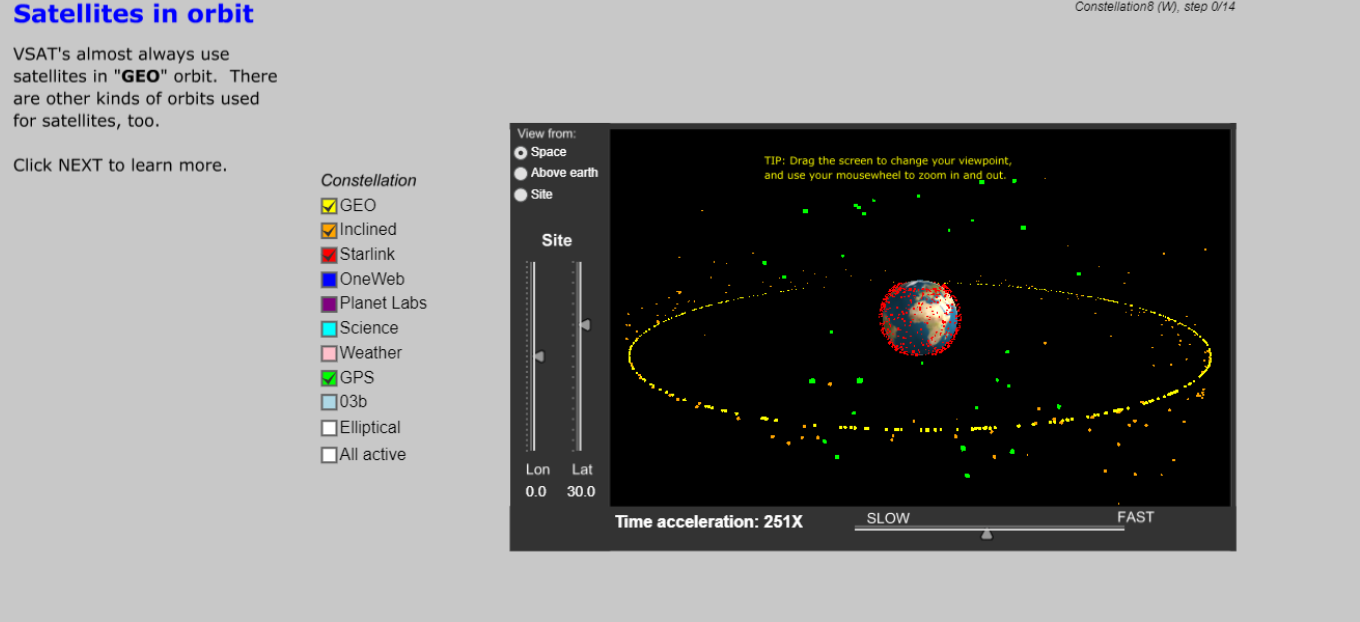
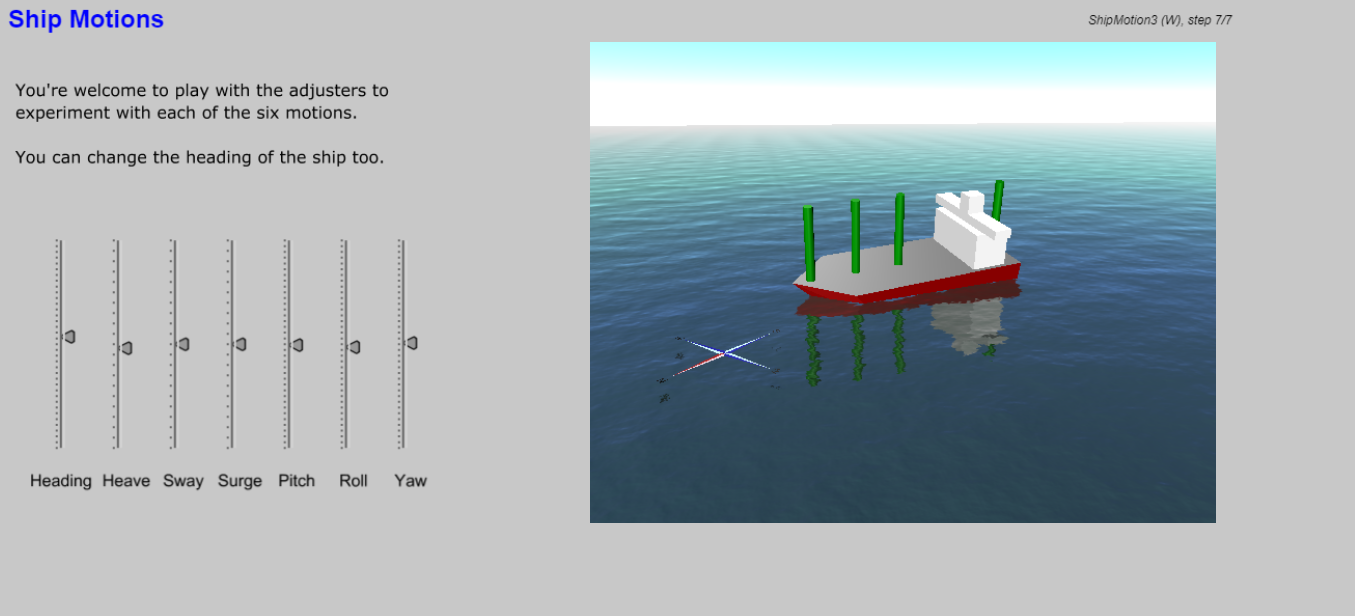
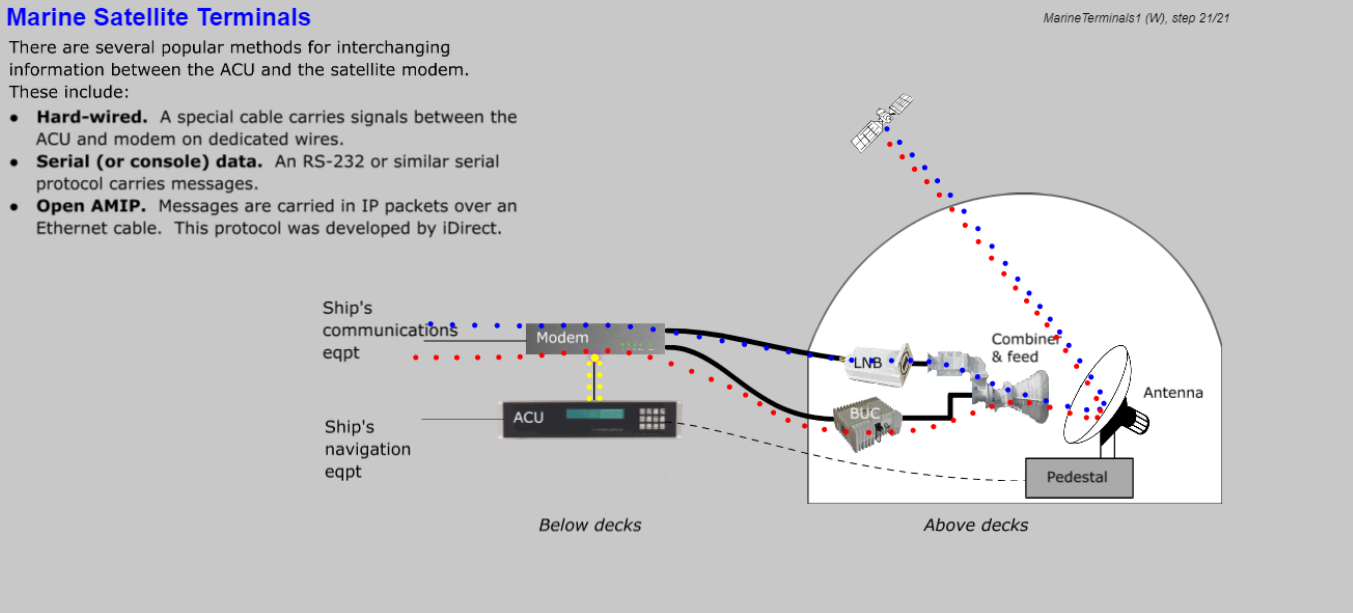
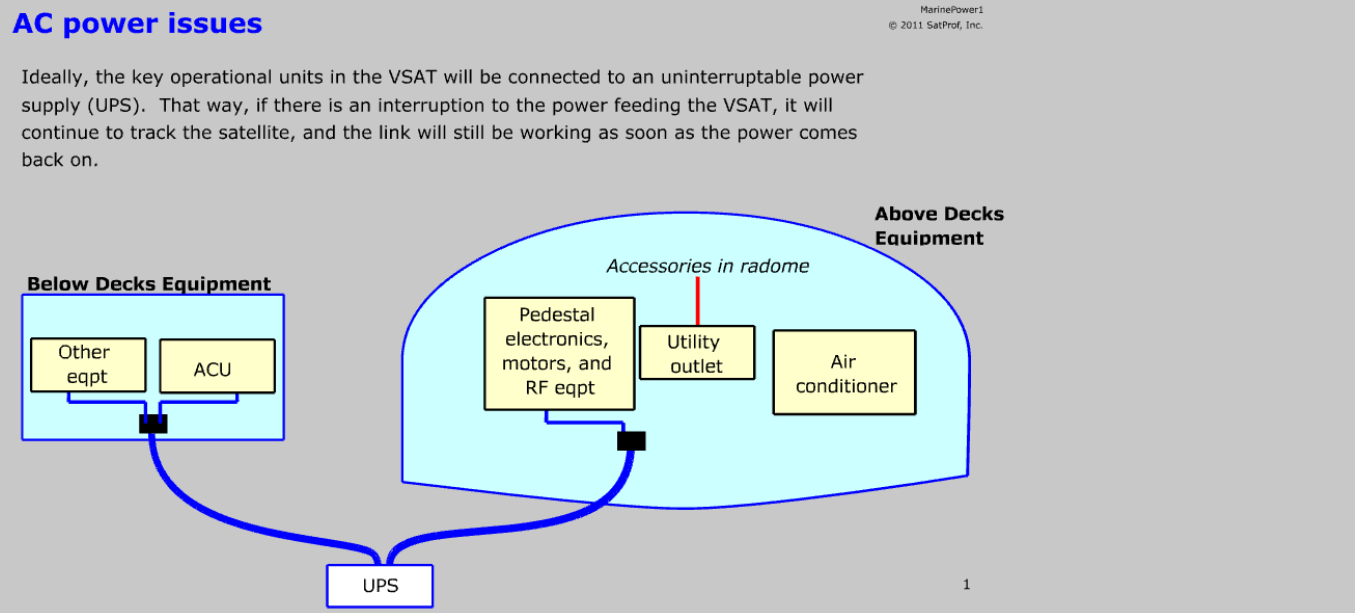
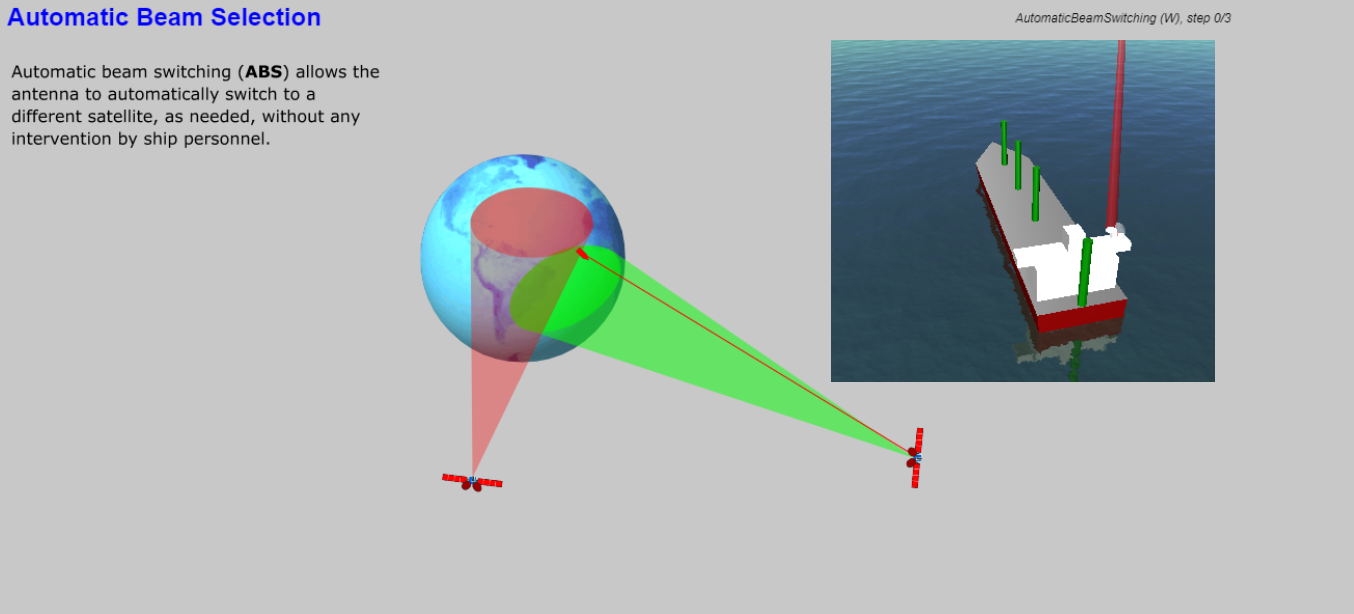
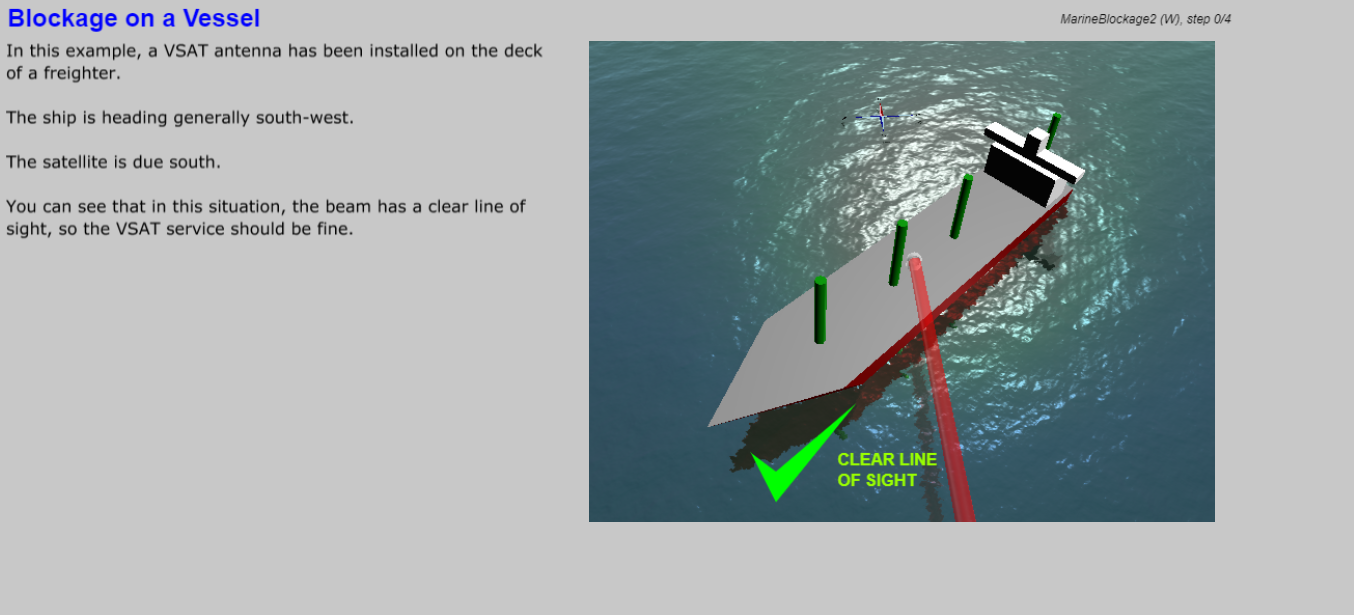
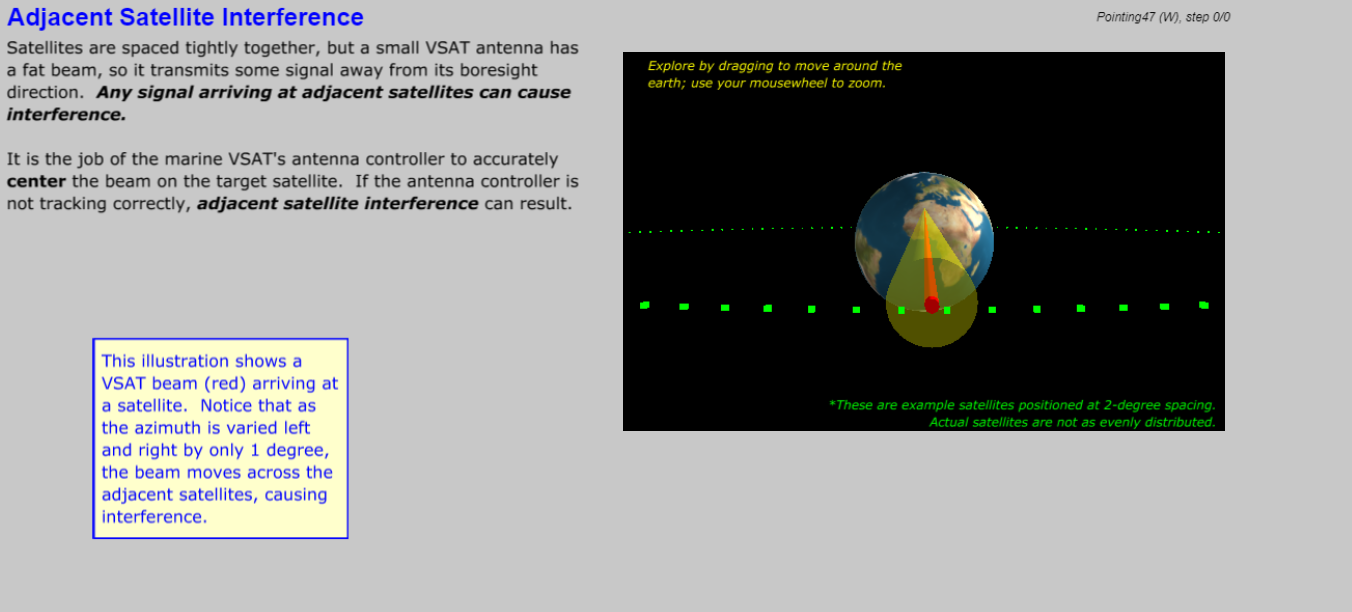
Learning Objectives
- Describe basic concepts of geo satellites, signals and networks; identify the VSAT components.
- Explain why and how VSAT compensates for ship roll, pitch, and yaw; relate AZ/EL/POL to location, heading, and satellite; describe the functions of the antenna controller.
- Compare heading and location and describe which ship’s navigation systems (GPS, gyro compass, etc.) provide each to the VSAT and why.
- Describe typical IP applications on board that would rely on the VSAT, including WiFi.
- Describe satellite footprints and compare C-band and Ku-band.
- Explain how rain and clouds affect the link.
- Describe how different geographic regions might use different downlink frequency plans.
- Explain how ship structure can block the signal and how blockages can be predicted.
- List outage non-fault reasons including blockage, keyhole effect, and safety zone muting.
- Describe radiation hazard compliance.
- Explain when and why beam switching is required.
- Compare automatic and manual beam switching.
- Explain interference issues including radars and mobile satellite transmitters.
- Explain how inaccurate dish pointing, cross-pol, and transmit power cause interference.
- Explain why the transmitter must be inhibited under certain scenarios, per FCC rules.
- Describe international and domestic regulatory factors that govern marine VSAT operation.
- Compare geographical coverage limits of VSAT with terrestrial wireless services.
- Describe the key differences between MSS satphones, BGAN, and VSAT.
- Describe how an alternative-path link is used to remotely configure and troubleshoot a VSAT.